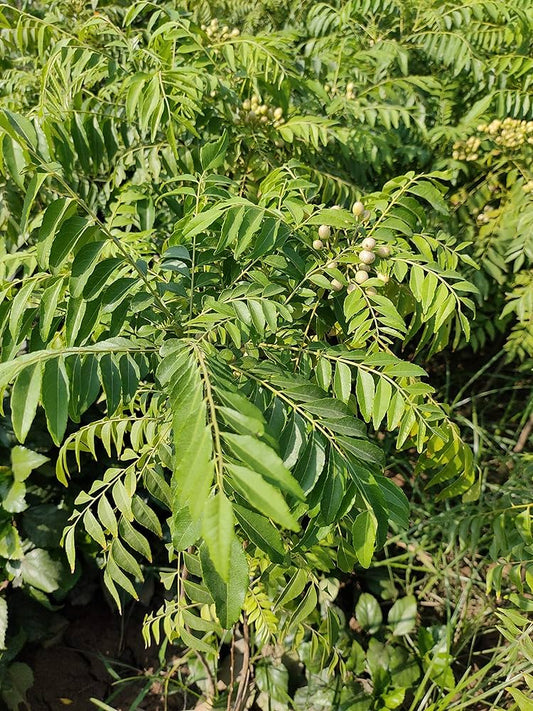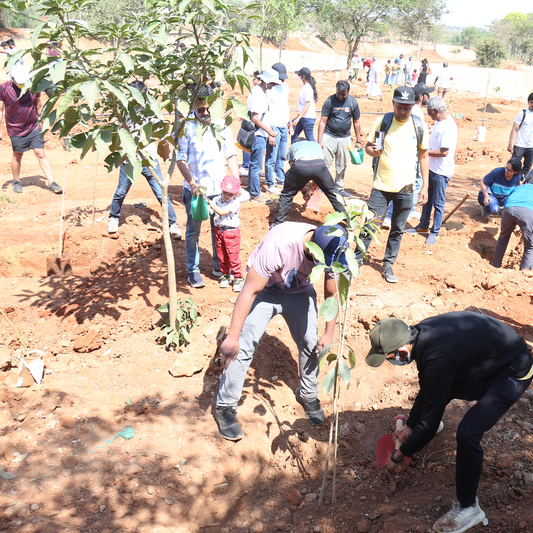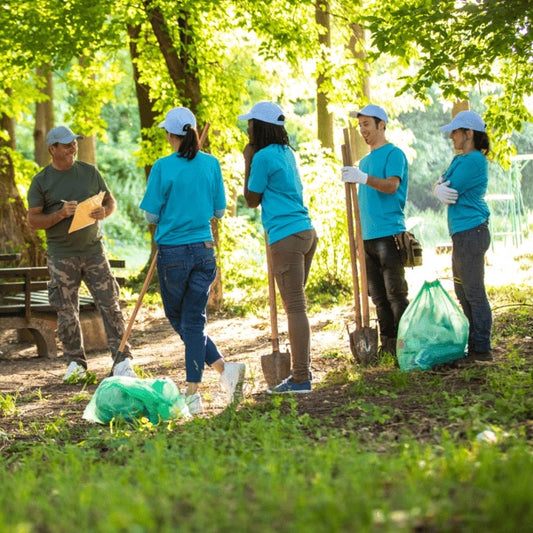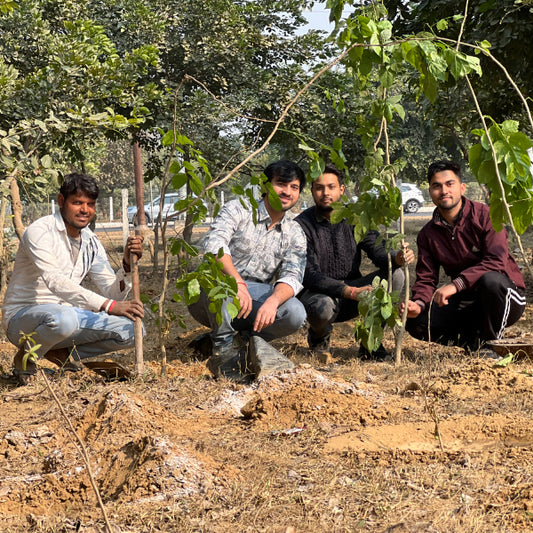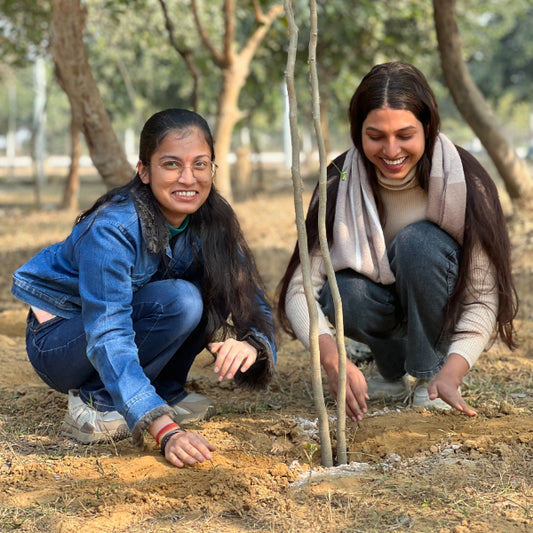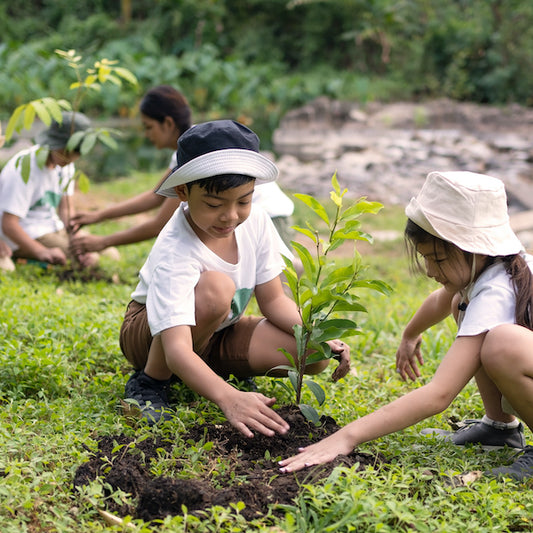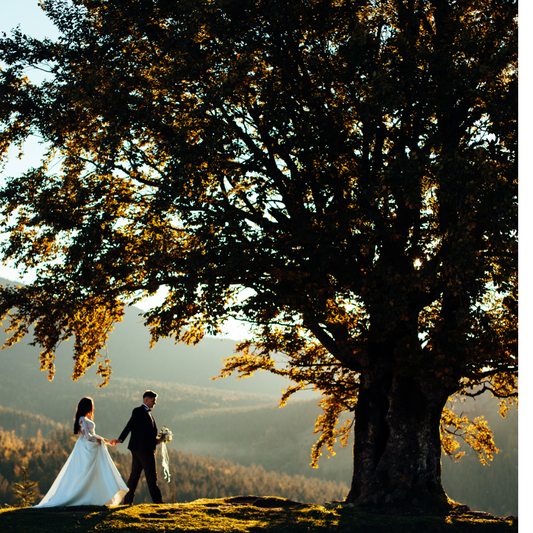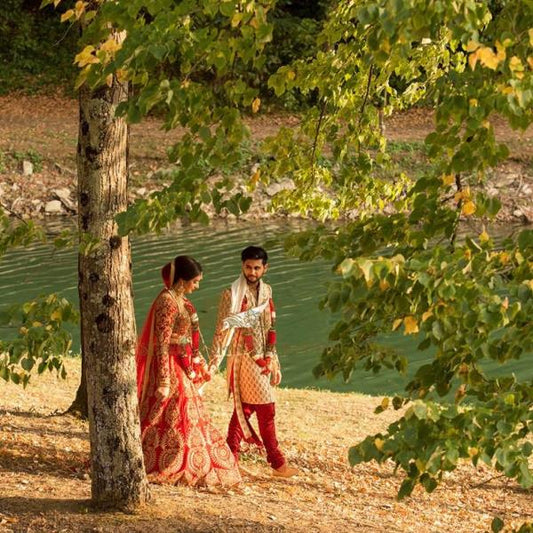Transforming Urban Spaces: Mr. Samyak Jain’s Urban Forest Initiative
Mr. Samyak Jain has spearheaded a visionary tree plantation initiative grounded in the urban forest concept to promote environmental sustainability. T Read more
Plantation Site Gallery
Digital Forest
Forest with 50 Trees planted
Top Trees Planted
Transforming Urban Spaces: Mr. Samyak Jain’s Urban Forest Initiative
Mr. Samyak Jain has spearheaded a visionary tree plantation initiative grounded in the urban forest concept to promote environmental sustainability. This initiative focuses on transforming underutilized urban spaces into thriving green ecosystems that enhance biodiversity and improve the overall urban environment. By adopting techniques such as dense plantation methods and the use of native species, the project aims to create self-sustaining forests that grow rapidly and contribute to ecological balance.
Through this initiative, Mr. Jain emphasizes the importance of combating climate change, improving air quality, and fostering community participation in environmental conservation. The project not only enhances urban green cover but also serves as a model for sustainable urban development by demonstrating how cities can coexist harmoniously with nature.
With a long-term vision, Mr. Jain’s efforts inspire individuals and organizations to recognize the critical role of urban forests in creating greener, healthier, and more resilient cities for future.
Tree Plantation Date
24th August 2024
Plantation Location
Village, opposite BGS Vinatham School, Khairpur Gurjar, Knowledge Park V, Greater Noida, Uttar Pradesh 201306
Trees Planted
Total Count: 50 Trees
Species Name: Neem
Forest Type: Urban Forest
Mr. Samyak Jain has launched a transformative tree plantation initiative rooted in the urban forest concept, aimed at fostering environmental sustainability and combating the adverse effects of urbanization. By utilizing innovative techniques like dense planting of native species, this initiative transforms underutilized urban spaces into vibrant green ecosystems that enhance biodiversity, improve air quality, and sequester carbon. Focused on sustainable development, Mr. Jain’s efforts not only contribute to mitigating climate change but also promote ecological balance and community well-being. His visionary approach highlights the critical role of urban forests in creating greener, healthier, and more resilient cities for future.
Advantages Of Urban Forest
Enhanced Air Quality
Mr. Samyak Jain’s urban forest initiative significantly improves air quality by increasing green cover in urban areas. Trees in dense urban forests absorb pollutants like carbon dioxide, sulfur dioxide, and nitrogen oxides, while releasing oxygen. This helps mitigate the adverse effects of vehicular emissions and industrial pollution, creating a healthier atmosphere for urban residents.
Climate Change Mitigation
By focusing on planting native tree species that grow rapidly in urban settings, the initiative effectively combats climate change. Urban forests act as carbon sinks, sequestering atmospheric carbon dioxide and reducing the overall carbon footprint of cities. This contributes to global efforts to mitigate climate-related challenges.
Urban Biodiversity Enhancement
The initiative plays a pivotal role in fostering urban biodiversity by creating habitats for various birds, insects, and small mammals. Dense planting of native species supports local ecosystems, helping to restore ecological balance in rapidly urbanizing environments.
Temperature Regulation
Urban forests reduce the urban heat island effect by lowering surface and ambient temperatures. The dense canopy cover provides shade, reduces the absorption of heat by concrete structures, and enhances cooling, making cities more comfortable for residents, especially during summer.
Stormwater Management
Trees in urban forests improve soil permeability, helping to manage stormwater runoff. This reduces the risk of urban flooding by allowing water to percolate into the ground, replenishing aquifers and preventing waterlogging in densely populated areas.
Aesthetic and Psychological Benefits
Urban forests contribute to the aesthetic appeal of cities by creating lush green landscapes. They also offer psychological benefits, reducing stress, improving mental well-being, and providing recreational spaces for urban communities to connect with nature.
Community Engagement and Awareness
Mr. Jain’s initiative actively engages local communities, fostering a sense of environmental stewardship. Through tree plantation drives and awareness campaigns, it educates individuals about the importance of sustainable development and the role of urban forests in achieving it.
Sustainable Urban Development
The initiative demonstrates how underutilized urban spaces can be transformed into sustainable ecosystems. By integrating urban forests into city planning, it sets a benchmark for sustainable urban development, ensuring a greener, healthier, and more resilient future for cities.
Economic Benefits
Urban forests reduce energy costs by lowering the demand for air conditioning due to natural cooling. They also increase property values and attract eco-conscious businesses, contributing to the local economy while promoting sustainability.
Improved Public Health
Cleaner air, lower temperatures, and access to green spaces contribute to better physical and mental health. The initiative aligns with the goals of creating healthier urban environments, reducing respiratory issues, and enhancing the quality of life for urban dwellers.
Activities During Tree Plantation
During Mr. Samyak Jain’s tree plantation initiative for environmental sustainability, the activities were meticulously planned to ensure a seamless and impactful execution. The site was prepared in advance, with pre-dug pits strategically arranged to optimize the growth and survival of saplings. On the plantation day, saplings were planted and followed by watering. The initiative reflected a strong commitment to creating a sustainable and thriving urban forest ecosystem.
Tree Plantation Purpose
SDGs Achieved through Mr. Samyak Jain's Tree Plantation Initiative:
1. SDG 13: Climate Action
Mr. Samyak Jain’s tree plantation initiative plays a crucial role in mitigating climate change by reducing the carbon footprint of urban areas. Urban forests, through their ability to absorb and store carbon dioxide, act as carbon sinks, helping combat the effects of climate change. The project also promotes awareness about the importance of climate action, inspiring others to take similar steps in reducing greenhouse gas emissions.
2. SDG 11: Sustainable Cities and Communities
The initiative directly contributes to the creation of sustainable, resilient cities. By planting trees in urban areas, Mr. Jain’s project enhances green spaces, reduces pollution, and contributes to healthier living environments. This promotes more sustainable urban development that balances growth with ecological preservation, making cities more livable for future generations.
3. SDG 15: Life on Land
Mr. Jain’s tree plantation project plays a key role in the preservation and restoration of terrestrial ecosystems. By focusing on planting native tree species in urban areas, the initiative enhances local biodiversity, supports wildlife habitats, and strengthens the resilience of ecosystems to environmental changes. This action is vital for protecting land-based ecosystems and combating desertification and land degradation.
4. SDG 6: Clean Water and Sanitation
Urban forests help manage stormwater and prevent waterlogging in cities. Trees planted in urban environments improve soil permeability, allowing rainwater to be absorbed and replenishing groundwater levels. This process helps ensure a cleaner, more sustainable water supply, thus supporting the achievement of SDG 6 by contributing to water conservation and reducing the risk of flooding.
5. SDG 3: Good Health and Well-Being
The urban forest initiative contributes to the health and well-being of the local community by improving air quality, reducing the urban heat island effect, and providing green spaces for recreational activities. Studies show that access to nature and green spaces lowers stress levels, improves mental health, and encourages physical activity, leading to a better quality of life for urban residents.
6. SDG 8: Decent Work and Economic Growth
Mr. Jain’s initiative can also have an indirect impact on the local economy by fostering the growth of green jobs. The tree planting and maintenance efforts can create employment opportunities in horticulture, environmental conservation, and urban planning. Additionally, the development of green spaces can boost local tourism and improve property values, contributing to sustainable economic growth.
7. SDG 12: Responsible Consumption and Production
By promoting the planting of native species, the initiative supports sustainable land use practices that help preserve natural resources. The project encourages environmentally responsible behavior in urban areas, demonstrating how cities can manage their resources efficiently, reduce waste, and create sustainable systems for urban development.
8. SDG 9: Industry, Innovation, and Infrastructure
The urban forest concept encourages the development of green infrastructure, such as green roofs, walls, and public parks, which integrate nature into urban planning. By incorporating environmental sustainability into urban infrastructure, the initiative fosters innovation in sustainable urban design and contributes to building resilient infrastructure that supports long-term environmental health.
9. SDG 7: Affordable and Clean Energy
Urban forests help reduce energy consumption by providing natural shade and cooling effects, thus reducing the need for air conditioning in urban areas. This energy-saving potential aligns with the goals of SDG 7, supporting the shift toward cleaner, more sustainable energy usage in urban environments.
10. SDG 17: Partnerships for the Goals
Mr. Samyak Jain’s partnership with Grow Billion Trees has played a pivotal role in advancing the achievement of SDG 17: Partnerships for the Goals. By joining forces with this organization, Mr. Jain has enhanced the scale and impact of his tree plantation initiative, leveraging Grow Billion Trees' network, expertise, and resources to create a more widespread and coordinated effort. This collaboration has enabled the planting of a significant number of saplings, facilitated knowledge sharing, and promoted a collective approach to sustainability, bringing together communities, environmental organizations, and local authorities. Together, they have fostered a shared commitment to environmental conservation and sustainability, demonstrating the power of partnerships in addressing global challenges and driving progress toward the United Nations’ Sustainable Development Goals.
ESGs Achieved Through Urban Forest
Environmental (E)
Mr. Samyak Jain's tree plantation initiative in the urban forest concept has made a significant contribution to the environment by enhancing urban green spaces and improving ecological health. The initiative promotes biodiversity by planting native species, which helps restore local ecosystems and supports wildlife habitats in urban areas. Additionally, it addresses the issue of air pollution, with trees acting as natural air purifiers by absorbing harmful pollutants and releasing oxygen. The initiative also aids in mitigating climate change by sequestering carbon dioxide, making cities more resilient to the effects of global warming. Furthermore, the project focuses on sustainable water management by reducing urban runoff and promoting groundwater replenishment through improved soil permeability. Overall, the environmental benefits of this initiative align with long-term goals for urban sustainability and ecological restoration.
Social (S)
The social impact of Mr. Jain's tree plantation initiative is equally profound. By engaging local communities in the tree planting process, the project fosters a sense of environmental stewardship and social responsibility. It provides a platform for residents to actively participate in shaping a greener, healthier urban environment, promoting social cohesion and community involvement. The initiative also enhances public health by improving air quality, providing shade, and creating green spaces for recreational activities. These spaces offer mental and physical health benefits, including stress reduction and opportunities for outdoor exercise. Additionally, the initiative encourages education and awareness about environmental sustainability, helping to build a more informed and engaged public committed to collective well-being.
Governance (G)
In terms of governance, Mr. Jain’s tree plantation initiative is an example of transparent, responsible, and collaborative leadership. By partnering with organizations like Grow Billion Trees and local authorities, the initiative adheres to best practices in sustainability governance, ensuring that resources are used efficiently and effectively. The project is managed with a focus on accountability, with measurable goals set for the number of trees planted, the species used, and the long-term maintenance of the urban forest. Through clear reporting, stakeholder engagement, and adherence to environmental regulations, the initiative demonstrates a commitment to sustainable practices that uphold the highest standards of governance. This approach not only strengthens trust with the community but also ensures that the positive impact of the initiative will be long-lasting.
Commitment by Grow Billion Trees
Grow Billion Trees is committed to driving sustainable plantation efforts, ensuring every initiative aligns with key environmental objectives and promotes long-term ecological balance. We focus on selecting native tree species that are well-adapted to local ecosystems, ensuring a higher survival rate and stronger environmental impact.
To maintain plant health and longevity, Grow Billion Trees emphasizes continuous maintenance and regular monitoring of the plantations. This approach helps ensure that each tree thrives, contributing effectively to both biodiversity and climate resilience.
Transparency is a core principle in our operations. Clients receive comprehensive reports, including geo-tagging of planted trees, survival rate updates, and ongoing progress reports. This level of openness allows clients to track the direct impact of their contributions, reinforcing trust and accountability.
Through our dedication to sustainable practices, Grow Billion Trees ensures that every plantation project leaves a lasting positive footprint on both the environment and the local communities it serves.
Summary
Mr. Samyak Jain’s tree plantation initiative, grounded in the urban forest concept, is a transformative effort aimed at promoting environmental sustainability in urban areas. The initiative focuses on enhancing green spaces by planting native tree species in carefully prepared sites, which contribute to biodiversity conservation, carbon sequestration, and the improvement of air and water quality. It also addresses urban challenges such as the heat island effect, stormwater runoff, and environmental degradation. By engaging local communities and fostering environmental awareness, the initiative strengthens social ties and promotes healthier living environments. Through this initiative, Mr. Jain exemplifies a forward-thinking approach to urban development, showcasing how sustainable practices can be integrated into cities for a greener, more resilient future.
Trees for Corporates
Trending
Most Popular
FAQ
What is the importance of tree plantation in urban areas?
Tree plantation in urban areas is crucial for improving air quality, reducing pollution, and combating climate change. Trees absorb carbon dioxide and other pollutants, release oxygen, and help cool down the environment by providing shade. They also help manage stormwater, reduce noise pollution, and promote biodiversity. By increasing green spaces, tree plantation enhances the quality of life, making cities more livable and resilient to the impacts of urbanization.
How do urban forests benefit cities?
Urban forests play a vital role in creating greener, healthier cities. They reduce the urban heat island effect by providing shade and cooling the surrounding areas. These forests also promote biodiversity by offering habitats for wildlife and supporting ecosystems. Urban forests help improve air quality, mitigate flooding by managing stormwater, and provide spaces for recreation and relaxation. Additionally, they contribute to the mental and physical well-being of urban residents by offering natural environments for social and solitary activities.
Can individuals participate in tree plantation initiatives in their local community?
Yes, individuals can actively participate in tree plantation initiatives in their communities. Many local organizations and government programs encourage individuals to plant trees in public spaces, parks, and even their own homes. By joining or organizing tree-planting events, individuals contribute to creating a greener, more sustainable environment. Personal involvement not only improves the community’s landscape but also promotes environmental responsibility among neighbors, creating a lasting impact for future generations.
What types of trees should be planted in urban areas?
In urban areas, native and drought-tolerant tree species are ideal for plantation. Native trees are better adapted to local climates, require less maintenance, and provide essential habitats for wildlife. Examples of suitable urban trees include neem, banyan, peepal, and tamarind. It’s important to avoid invasive species that can harm local ecosystems. Consulting local forestry experts or urban planners can ensure that the right species are chosen for the local environment and urban needs.
How do tree plantations help combat climate change?
Tree plantations play a crucial role in combating climate change by absorbing carbon dioxide from the atmosphere. Trees store carbon, which helps reduce the overall concentration of greenhouse gases that contribute to global warming. Additionally, trees mitigate heat in urban areas, reduce energy consumption, and improve the resilience of cities to extreme weather events. By planting trees, individuals and communities contribute to the long-term fight against climate change, making their surroundings more sustainable and eco-friendly.
What is the process of starting a tree plantation project?
Starting a tree plantation project involves several key steps: choosing the right location, selecting appropriate tree species, preparing the soil, planting saplings, and providing care. Individuals or groups can contact local environmental organizations, urban planners, or authorities to determine the best areas for planting. It’s also important to plan for the ongoing maintenance of the trees, such as watering and protecting them from pests, ensuring they thrive and contribute to a greener urban landscape.
How can tree plantations help in improving urban biodiversity?
Tree plantations enhance urban biodiversity by creating habitats for various species of birds, insects, and small animals. Urban trees provide shelter, food, and breeding grounds for wildlife, which can otherwise struggle to survive in heavily developed areas. By planting a variety of native trees, urban biodiversity is enriched, supporting a balanced ecosystem and reducing the negative impacts of urbanization. This contributes to a healthier urban environment, where both humans and wildlife can coexist in harmony.
Are there any benefits to tree plantation for mental and physical health?
Yes, tree plantation and access to green spaces offer numerous mental and physical health benefits. Being surrounded by nature has been shown to reduce stress, improve mood, and enhance overall well-being. Trees help to filter out pollutants, improving air quality, which benefits respiratory health. Green spaces also provide opportunities for physical activities like walking, jogging, or relaxing outdoors, promoting better fitness and reducing health risks associated with urban living, such as hypertension and anxiety.
How do tree plantations reduce urban heat islands?
Urban heat islands occur when cities become significantly warmer than surrounding areas due to human activities and the prevalence of concrete and asphalt. Tree plantations help combat this by providing shade and releasing moisture through a process called transpiration, which cools the surrounding air. The presence of trees lowers the temperature of urban areas, making cities more comfortable during hot weather. This also helps reduce the demand for air conditioning, leading to energy savings and reduced greenhouse gas emissions.
What role do urban forests play in water management?
Urban forests play a crucial role in water management by reducing stormwater runoff and improving groundwater recharge. Trees absorb rainwater through their roots, allowing it to filter into the soil rather than flow directly into drains, which helps prevent flooding. They also improve the water quality by filtering pollutants before they enter water systems. By planting trees in urban areas, individuals contribute to a natural water management system that enhances sustainability, reduces flood risk, and ensures better water availability.
Urban Greening
Urban greening is the act of turning concrete jungles into lush green havens. It's like giving cities a breath of fresh air – literally! When individuals take part in tree plantation, they help transform city landscapes into vibrant, sustainable ecosystems. This doesn’t just make the city prettier, it improves air quality, reduces pollution, and creates healthier spaces for people to work and play. Imagine walking down the street, surrounded by trees that make the whole area feel like a park. Urban greening through tree planting isn’t just for beautification, it’s an essential piece of making cities more livable, cooler, and breathable. So, if you're looking to boost your city’s vibe, grab a sapling and get planting – it's a win for both you and the environment!
Tree Canopy
A tree canopy is like a city’s natural umbrella. By planting trees in urban spaces, individuals help create these lush overhead shields, providing shade, reducing heat, and offering shelter to both people and wildlife. A thick tree canopy doesn’t just cool down the environment, it also protects the earth beneath from erosion and the impacts of heavy rainfall. Not only does it beautify the city, but it also adds a layer of environmental resilience. Think of it as your city’s air conditioner, except it’s powered by nature. So next time you're in the city, take a moment to appreciate the leafy canopy above – or better yet, contribute to it by planting a tree!
Urban Forestry
Urban forestry is the practice of managing and caring for trees in urban settings. It’s not just about planting trees; it’s about cultivating them to thrive amidst the hustle and bustle of city life. For individuals looking to get involved, urban forestry initiatives provide the perfect opportunity to make a tangible impact. These urban forests help reduce pollution, mitigate climate change, and improve community well-being. Planting trees as part of an urban forest initiative creates long-term benefits, transforming a gray city into a green, sustainable paradise. So, roll up your sleeves, become an urban forester, and help build greener cities for future generations!
Green Urban Spaces
Green urban spaces are the secret sauce to making cities more enjoyable. The need for trees and greenery in urban areas cannot be overstated – they provide cool retreats from concrete, reduce air pollution, and even enhance mental health. When individuals participate in tree plantation initiatives, they’re helping turn barren city blocks into beautiful, functional spaces. Parks, gardens, and tree-lined streets offer more than just a peaceful place to relax; they’re essential for improving overall quality of life in cities. So, if you’re looking to make your city a little greener, a little cooler, and a lot more fun, grab a shovel and start planting trees. The world will thank you.
Biodiversity in Cities
Biodiversity in cities might sound like an oxymoron, but it’s a crucial goal for sustainable urban development. Through tree plantation efforts, individuals can contribute to increasing biodiversity by creating habitats for birds, insects, and small animals. Trees provide essential food, shelter, and nesting spots for wildlife, transforming urban environments into vibrant ecosystems. When you plant a tree in the city, you're not just adding a little greenery, you’re creating a home for creatures that help pollinate plants, control pests, and improve ecological balance. Next time you’re considering a tree for your backyard or local park, think about it as an investment in biodiversity – it’s nature’s gift to the urban world.
Sustainable Urban Development
Sustainable urban development is about building cities that grow in harmony with the environment, and trees are an essential component of that equation. When individuals engage in tree plantation activities, they contribute to sustainable cities that not only meet the needs of today but also preserve resources for future generations. Trees help cities reduce their carbon footprint, manage water efficiently, and create energy-efficient environments. So, if you're dreaming of a more sustainable future, it starts with a simple act – plant a tree. The long-term impact of these small green acts will lead to a much more resilient and eco-friendly urban lifestyle.
Climate Resilience in Cities
Climate resilience in cities is the ability to adapt to and thrive in changing environmental conditions, and trees play a vital role in this. Planting trees in urban areas helps cities cope with the effects of climate change by mitigating heat, reducing energy consumption, and improving stormwater management. As cities grow, they must become resilient to extreme weather events, and trees are the unsung heroes in this process. Individuals who participate in tree planting initiatives are actively contributing to a more climate-resilient city, making sure that when the heatwaves hit or the rains pour, urban life can carry on smoothly. It’s a small act with a big impact!
Air Quality Improvement
Improving air quality is one of the most direct benefits of tree plantation in urban areas. Trees act as nature’s air filters, absorbing carbon dioxide, nitrogen oxides, and sulfur dioxide, while releasing oxygen in return. In cities plagued by pollution, trees can make a world of difference. For individuals interested in improving the air quality of their neighborhoods, tree planting is a practical, long-term solution. Not only do trees help reduce harmful pollutants, but they also improve the health of residents by providing cleaner, fresher air. So, next time you’re out for a walk, take a deep breath and appreciate the trees – they’re the lungs of the city!
- Choosing a selection results in a full page refresh.
- Opens in a new window.


